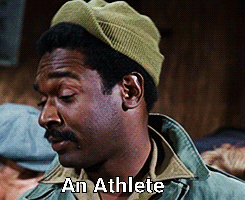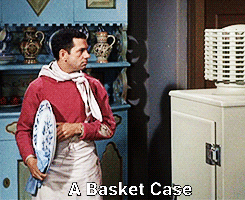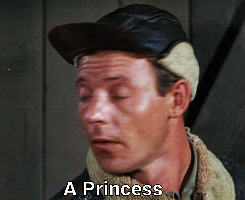#also Hogan and Carter could swap too
Explore tagged Tumblr posts
Text





I had an idea
Based on this
#hogan's heroes#peter newkirk#andrew carter#louis lebeau#robert hogan#james kinchloe#colonel hogan#newkirk my beloved#i love them#i found out i can edit gifs with my phones photo editor#game changer for me#so i couldnt help myself with this#although i feel like LeBeau and Newkirk could be interchangeable#Newkirk is def more criminal but LeBeau also loves good mischief#also Hogan and Carter could swap too
72 notes
·
View notes
Text
Who in Hogan’s Heroes is Most Likely to Be With an Alt Person?
Inspired by a chat in my discord 😌 enjoy HH fans and alt people, or if you’re me both 😆
MOST
Marya
Hogan
Carter
Helga
LeBeau
Klink
Kinch
Hilda
Newkirk
Schultz
Least
• We all know Marya would be all over you. Flirting with you immediately, teasing you and giving you both compliments and pet names. It becomes her personal mission to fluster you who look so unflappable and also just to put a smile on your face. You are more than your looks to her just as she is to you- you have such interesting stories to tell and her attention will be on you the entire time.
• Colonel Hogan is lowkey into everybody, I said what I said ��🏻♀️ your alt style is almost like a challenge to him. A danger. What can he say? He likes a little danger. Hopefully that style of yours comes with the teasing attitude he can’t help falling for. Hogan is happy to swap leather jackets with you or better yet you’ll forget yours so he can unzip his and drape it over you, not in any hurry to take his hands off.
• If anyone is to look at you with simple, whimsical curiosity, it’s one Mr. Andrew Carter. He’ll be open approaching you with questions even if they do come out bashful from the way you look at him, the rush he feels at your gaze. Carter hopes your rebellious streak lends to enjoying blowing things up, too, and he’s the most understanding person you’ll ever meet if you feel like you’re different because you know what? So does he.
• Our Miss Helga loves a bad boy/girl 😌 It gives her a rush just looking at you and thinking of all the places you could sweep her off to. How she could escape a dull life as a secretary for some unknown adventure and danger with you. No shame in some little fantasies as she works, she tells herself.
• Louis LeBeau? Our short king who will kill you? Simps for an alt person. You’ve got fire in you and he respects that. And sure, it turns him on a little too. He’s only human, after all! It warms his heart to see you putting spike collars on the guard dogs and being so sweet with them despite your intimidating looks. He probably teases you a lot but is very flirty, too. Comes up with some French nickname for you having a dark side even though you’re so nice!
• Sorry, but not sorry: Klink is turned on by the leather. The boots. The power you exude. The moment you enter Wilhelm Klink’s office and his life, he is a simp for you. He’s wrapped around your finger ready to give you whatever you want. Wine and dine of course and he may try to play you a little music- go easy on him! Or don’t. He won’t mind 🤷🏻♀️
• Not that they hurt, but looks aren’t everything to Kinch. He cares more about what’s inside and he respects that the way you dress is your personal expression. It does appeal to him how unique your expression is and he is actually the most willing to try out elements of your style. He just laughs and does voices as you dress him up, reveling a bit in being taken care of since he is such a natural caretaker himself.
• Hilda likes a bad boy/girl too, but she also has more desire for someone to settle down with. You’re attractive and a lot of fun, but she’ll definitely feel a bit of a desire to nail you down. Or maybe you two will simply end up fighting for who gets to pin who down…👀
• Newkirk, for all his antics, would feel a bit insecure in his masculinity around someone with a tough image. Especially when it comes to women, he likes the feminine look and someone he feels like he can have a little control over. Not that he’s fully toxic, but he definitely wants to be the dominant partner and be the one rakishly sweeping you off your feet, not the other way around! He’d need some convincing.
• Sweet Sergeant Schultz, quite frankly, is intimidated by you. Maybe even a little confused when he sees the way you dress and carry yourself. He might even ask why you’re dressed like that not realizing it isn’t for some role or purpose, you just enjoy it! Once he hears that and especially if you show him a sweet or flirty side (or both!), though, you will quickly have him forced to admit he’s attracted to you.
#hogan’s heroes#hogan’s heroes headcanons#hogan’s heroes x reader#colonel hogan#corporal newkirk#corporal lebeau#sergeant carter#colonel klink#sergeant schultz#robert hogan#peter newkirk#louis lebeau#andrew carter#wilhelm klink#hans schultz#marya hoganova#helga#hilda
3 notes
·
View notes
Text
Jobs in Cars: The Automotive Art of Pat Dougherty
Pat Dougherty is one of those guys who makes mere mortals wonder why they’re so lame. At least that’s the effect he has on your author. Pat’s happily married and has raised three kids, he can sing and act, his “Blues Patrol” Blues Brothers stage show has packed New England venues for 20 years, he’s an ASA Certified master automotive technician, but most of all, Pat can draw cars.
No computers are involved, and he isn’t the type to obtain realism via retouched digital photos. The only digital aspect of his drawings are his 10 fingers. Everything on the paper comes directly from his inquisitive and detail-oriented mind. Ever since elementary school art class, Pat’s had an innate ability to create highly realistic renderings without much training beyond the usual public-school curriculum. But it was during architectural graphics class at Stamford High School (the same Connecticut public school that hatched star-crossed Hogan’s Heroes star Bob Crane a generation earlier) where Pat says, “My teacher, Mr. Burkhardt, was very supportive and fed my interest with helpful commentary. It took off from there.”
In particular, Pat’s grasp of the technical sideline of drawing, as described with terms like “fineness of line,” “perspective,” “realism,” “shading,” and “proportion” is highly calibrated. Beyond that, his attention to realistic details like factory part numbers, correct surface textures, and—to this writer’s opinion—getting the correct rocker panel “tuck under” or “fuselage effect” are what separate Pat’s work from that of other automotive cartoonists. Check for yourself: too many automotive illustrators and cartoonists fail to properly capture the tube-like surface development of most automobile bodies. They’re rendered with vertical slab sides that simply aren’t correct. Dougherty’s stuff differs.
After high school, Pat went to work at an architect’s office. There, he “discovered the empty feeling of doing work that others took credit for.” Following his passion for cars, he left the architect after a year and went to work at Fairbanks Racing Transmissions, a leading East Coast retailer of high-performance automatic transmissions and components. At Fairbanks, Pat did a lot of everything, from assembly to marketing to answering tech questions by phone. Yes, Pat even applied Fairbanks’ trademark black tiger stripes–over–Caterpillar Tractor Yellow graphics to completed transmissions and torque converters prior to shipment: “We used a template to mask off the stripes.” No, Pat’s transmissions weren’t “signed by the artist,” but he took extra care to make sure the paintwork was applied with care. Maybe there’s one in your garage or under the floorboards of your hot rod.
After leaving Fairbanks, Pat spent the next 30 years working for AAMCO transmission shops in Connecticut. But through it all, Pat remained active at his hobby of drawing automotive subjects while also finding time to raise a happy family of three. Today, Pat is transitioning into the world of self-employment with a business centered around his hand-drawn renderings of cars and trucks. During the car-show season, he can be found at more than 30 outdoor events, including the Syracuse Nationals in New York, Carlisle Chrysler Nationals in Pennsylvania, and others where he’s given spotlight space to do his thing before the passing crowd. We visited Pat’s Stamford, Connecticut, home and studio for a look at his work. If you dig what you see, Pat sells reprints and is also ready to render your vehicle in his unique cartoon-realist style.
Working in pencil, Pat’s drawing style combines the disciplined realism of illustration greats Dave Kimball, William A. Moore, Steve Swaja, and Tom West with the distorted whimsy of Pete Millar, Ed Roth, Bob Thompson, Alex Toth, and George Trosley. It’s crisp but not slick and overproduced. Pat says, “The metal parts are cool enough as they are. They don’t need me to make them better.”
A close-up of the Chevelle Z16’s L78 396 engine shows Pat’s allegiant attention to often overlooked details like the correct casting numbers and steering shaft clearance crease in the driver-side exhaust manifold. “I hone in on items unique to each car and spotlight them. No detail gets away without scrutiny to see if it can add an extra level of technical correctness to the drawing.”
This 1969 Super Bee portrays Pat’s novel approach to rocker panels. Unlike the slab-sided interpretations of certain other artists, the rounded side profile and tucked-under skirt of the real car body is respected. Commissioned by the owner of a modified Super Bee, Pat captured the Demon Six Shooter induction system correctly. Pat’s life-long ownership of real muscle cars helps him solve technical problems like merging the 440 Magnum exhaust manifolds into the canister-style Hemi muffler shells. He drove a V-code 1970 Charger 440 Six Pack with a factory-installed 4.10 Dana to his job at Fairbanks and still owns a 1970 Super Bird and 1974 Dodge Monaco “Blues Mobile” clone.
This 1968 Road Runner offers another look at Pat’s graceful execution of the rocker panel tuck-under and fuselage-shaped surface development. Note the correct depiction of the 11-inch drum-brake backing plates. Compare them with the (optional) disc brakes rendered on the Super Bee. Pat’s superlative grasp of “perspective” and distance is seen in how the driver-side headlamp bezel is the center of the image; from it, the rest of the rendering falls into the background by obeying the law of zero point.
This 1965 GTO represents a “day two” car with 421 swap (note fender emblems), Hurst wheels, Royal Bobcat tweaks, and Thrush mufflers. The shaded detail of the unloaded A-body front suspension is mouthwatering. The “bathtub” air-scoop pan atop the Rochester Tri-Power setup depicts the over-the-counter GTO Ram Air equipment first offered in August 1965. If Pat told us there’s a four-bolt main Super Duty block under the heads, we’d believe it.
OLYMPUS DIGITAL CAMERA
Lightly modified with headers, a Milodon oil pan, and Cragar SS mags, the owner of the real C-code 429 Cobra Jet–powered 1971 Cougar who commissioned this drawing also added a J-code 429 Cobra Jet-R hoodscoop and air-cleaner assembly to the his car. The central fuel-line entry position identifies its factory-installed GM Rochester Quadrajet four-barrel carburetor. CJ-R 429s had 780-cfm Holley carburetors with different fuel-line routing. Pat demands—and delivers—this level of accuracy in all of his drawings. As always, the graceful rocker panel tuck-under is perfectly rendered.
Each of Pat’s illustrations rewards attentive viewers with hidden details like this Chevrolet Bow Tie logo hidden amidst the exhaust plume. Return to the overall view (above) to spot the Mopar Pentastar being expelled from the driver-side exhaust collector. Though Pat is a Mopar fan at the core, he’s wise enough to appreciate all makes.
As this 1970 GTO Judge convertible depicts, “I position the image on the page so the viewer is roughly at tire height. This way the car appears to be jumping off the page and coming right at you. Of the 40,149 GTOs built in 1970, only 168 were Judge convertibles. Note the detail expressed in the vented disc-brake rotors and by the base of the Saginaw power-steering box. The seam welds in the Flowmaster mufflers are given as much attention as the fine mesh of the grille insert.
Another Pontiac, this 1968 LeMans was rendered for a client who wanted a picture of the car he bought brand new in 1968—and still owns. Built as a non-muscle model (note: it’s not a GTO), Pat correctly rendered the 255hp Pontiac 350 right down to its single-snorkel air cleaner, Rochester 2CG two-barrel carburetor, and log-style exhaust manifolds. Pat even included the new-for-1968 Harrison cross-flow radiator and standard-issue, 9.5-inch front drum brakes.
If a car was born for Pat’s spot-on rocker panel tuck-under treatment, the 1970–1974 Mopar E-body is it. This 1970 Challenger R/T sports the base 383 Magnum. New for 1970 was Chrysler’s adoption of the Holley 4160 four-barrel carburetor in place of the Carter AVS employed on 383 Magnums in 1969. Dig Pat’s application of casting numbers and realistic rendering of the dual-snorkel, air-cleaner housing.
Resisting the temptation to finesse the late-model LC Challenger’s slab-sided rocker panels, Pat rendered the 2015 Challenger SRT8 Hellcat perfectly. In celebration of how modern muscle cars have embraced the once-dreaded catalytic converter, Pat placed them prominently in view, complete with wideband oxygen sensors and three-wire connections.
“I drew this 1965 Plymouth A990 Race Hemi during the 2015 Carlisle Chrysler Nationals show. I was seated in front of a real one on display and members of the original Ramchargers walked by and complimented me. That was a fantastic memory.” Note the oil cup in the distributor, keenly defined lower control arms, and Holley logo on the outboard carburetor float bowl.
To Pat, the wheels are just as important as the car they support. This close-up of the Race Hemi’s factory-issued, 14-inch front wheel correctly presents its large-diameter hub, three-nub cap flange, and low offset wheel hoop. The narrow 7.75-14 bias-ply tire is also masterfully rendered.
(Art Director, please draw a circle or position arrow to indicate the “vacuum motor”). The 1971–1974 Mopar B-body’s fuselage-styled body is a perfect fit for Pat’s rocker panel tuck-under technique. This 1971 383 Road Runner also highlights Pat’s problem-solving skills. Ordinarily, the up/down vacuum motor driving the N96 Air Grabber scoop (see arrow/circle) is hidden by the underside of the hood. While many artists might choose to ignore it, Pat “fabricated” a support brace so it could be included in the “logic” of the scene.
Pat’s drawings seldom include people, but as this illustration of the Phantasm 1971 Barracuda proves, he can render living beings just as well. Here the 1979 cult classic film’s Tall Man (played by actor Angus Scrimm) takes the wheel, ready to throw the evil orb. Note how Pat artfully replaced the stock Pistol Grip shift handle and his take on the Hurst logo.
Your author’s Rampage Match Bash 1963 Dart caught Pat’s attention and is shown here, partially completed. Being intimately acquainted with the car, I’m stunned how Pat accurately rendered the spacing of the welded-together header tubes. Nothing escapes Pat’s keen eye.
As a teenager in the early 1980s, Pat drew the Greenwood turbo Corvette and a 1970 SS396 Chevelle in 12th grade for professor Burkhardt’s architectural graphics class at Stamford High School. Though lacking the whimsical fun of his later works, Pat’s early mastery of the craft is clear to see. As shown by the Hemi rocker cover and Carter AFB carburetor, Pat keeps life-size props nearby to ensure accuracy.
Way back in 1987, Pat (“Elwood Blues”) converted this locally purchased 440 big-block Monaco into a Blues Mobile clone and hit the road with his Blues Patrol musical act and scored positive reviews. Still active, he’s available for booking at his website.
The post Jobs in Cars: The Automotive Art of Pat Dougherty appeared first on Hot Rod Network.
from Hot Rod Network http://www.hotrod.com/articles/jobs-cars-automotive-art-pat-dougherty/ via IFTTT
0 notes